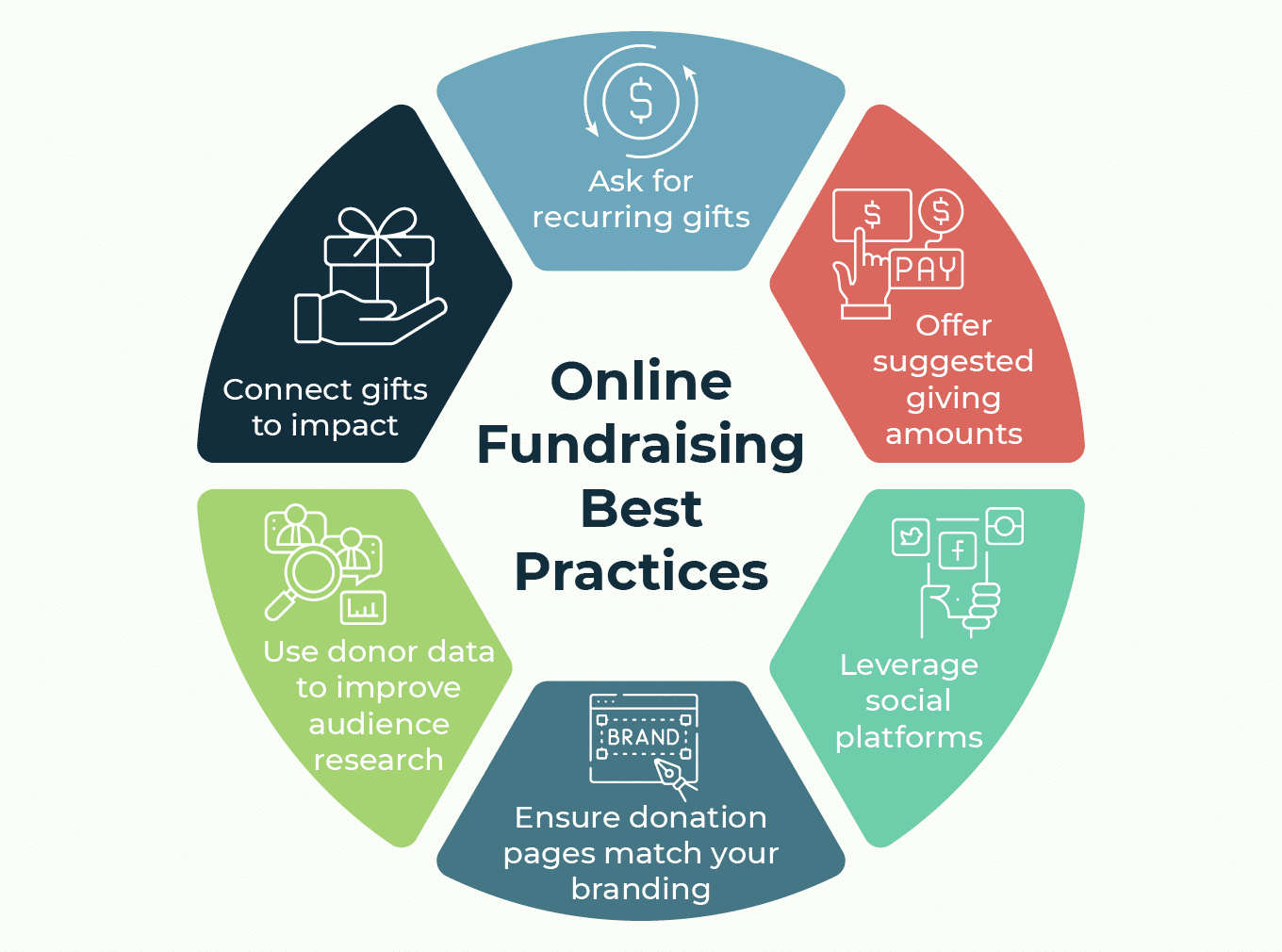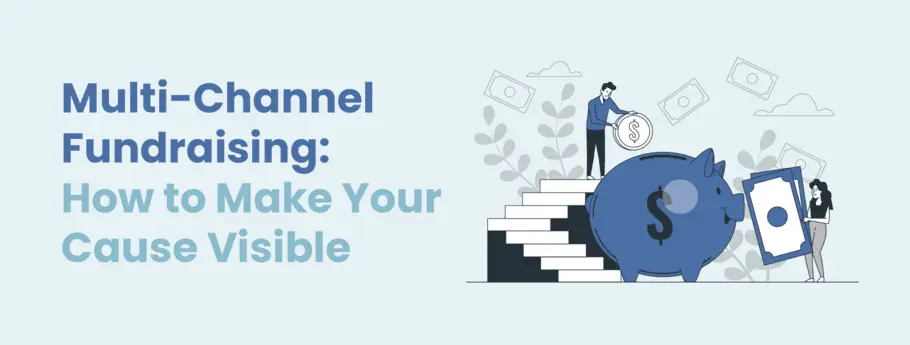Online Fundraising: Effective Digital Campaigns for Nonprofit Success
Online Fundraising: Effective Digital Campaigns for Nonprofit Success
Blog Article
The Duty of Neighborhood Engagement in Nonprofit Fundraising: Structure Lasting Relationships for Sustainable Assistance
Community interaction is increasingly identified as a critical component of successful nonprofit fundraising. By promoting real connections with local stakeholders, companies can cultivate trust and loyalty, which are essential for sustainable assistance. Nevertheless, the techniques and techniques used to engage neighborhoods differ commonly, raising crucial questions concerning effectiveness and influence. What are the finest practices for growing these important links, and just how can nonprofits measure their success in this sector? Understanding these dynamics could dramatically affect the future of fundraising efforts and the total goal of not-for-profit organizations.
Recognizing Community Involvement
Area engagement is a crucial part of successful not-for-profit fundraising efforts. It refers to the techniques and tasks that companies employ to get in touch with their regional neighborhoods, fostering connections that are mutually valuable. Recognizing neighborhood interaction involves acknowledging its complex nature, that includes outreach, collaboration, and involvement. Nonprofits need to determine key stakeholders-- such as neighborhood participants, neighborhood businesses, and other organizations-- to create efficient interaction methods.
Reliable neighborhood interaction is asserted on active listening and responsiveness to the requirements and interests of the area. This process involves getting comments, recognizing community dynamics, and ensuring that the company's mission aligns with regional concerns. Engaging the community can take different types, consisting of public meetings, volunteer chances, and collaboration efforts, each made to motivate involvement and financial investment in the organization's objectives.
Furthermore, area engagement ought to be approached as an ongoing dialogue instead than a single effort. By fostering a comprehensive setting where community voices are listened to and valued, nonprofits can construct a strong structure for future fundraising undertakings. Ultimately, a deep understanding of area interaction equips companies to produce genuine connections that improve their general performance and sustainability.
Benefits of Strong Relationships
Strong partnerships created through community involvement return numerous advantages for not-for-profit fundraising initiatives. Firstly, these partnerships foster count on and reliability, essential parts in encouraging donors to contribute. When prospective fans see a not-for-profit actively included in their area, they are more likely to rely on its objective and impact.

Additionally, these partnerships facilitate effective interaction. Nonprofits can leverage their connections to share tales of impact, updates, and requires, guaranteeing that advocates stay enlightened and involved. This open line of interaction not only strengthens bonds however likewise encourages referral promotion, expanding the nonprofit's reach.
Lastly, solid area connections can bring in new partners and enrollers. Organizations and people are more inclined to straighten with companies that show purposeful neighborhood participation, giving additional resources and support that can considerably improve fundraising capabilities. Therefore, growing robust connections through neighborhood interaction is essential to a nonprofit's long-term fundraising success.
Methods for Efficient Involvement
Just how can nonprofits efficiently engage their neighborhoods to boost fundraising efforts? Establishing targeted methods is necessary for promoting meaningful links. Initially, leveraging social media platforms makes it possible for companies to share their mission dynamically and interactively, getting to a broader target market. Routine updates, involving content, and calls-to-action can galvanize neighborhood passion and engagement.
2nd, organizing neighborhood occasions, such as workshops, volunteer possibilities, or fundraising drives, facilitates face-to-face communication, allowing nonprofits to showcase their impact and efforts. These occasions not only elevate funds but also cultivate relationships and allow neighborhood participants to involve straight with the reason.
Third, implementing customized interaction strategies can enhance involvement. Customizing messages to specific donor segments based on passions and previous payments fosters a feeling of belonging and investment in the company's mission.
Lastly, developing collaborations with regional services and neighborhood leaders can amplify outreach initiatives. Collective campaigns can boost presence and reliability, showing a cumulative dedication to the neighborhood's health. By incorporating these approaches, nonprofits can develop enduring connections that boost fundraising efforts and drive sustainable support.
Gauging Involvement Success
While engaging the community is essential for effective not-for-profit fundraising, determining the performance of these interaction initiatives is equally important. Developing clear metrics allows companies to examine exactly how well they are linking with their audience and achieving their fundraising objectives. Secret check my reference efficiency signs (KPIs) such as benefactor retention rates, volunteer involvement degrees, and involvement on social networks platforms offer substantial information for evaluation.

Consistently evaluating these metrics makes it possible for organizations to pivot their strategies when essential, making sure that community involvement continues to be lined up with their total mission. In addition, sharing these results with stakeholders promotes openness and constructs count on, encouraging further neighborhood participation. Inevitably, a durable measurement structure not only notifies future fundraising campaigns but additionally enhances the relationship between the nonprofit and its advocates, preparing for sustainable success.
Instance Research Studies in Community Impact
Various instance research studies highlight the profound influence that neighborhood interaction can carry not-for-profit fundraising success. One noteworthy example is the "Something to chew on" campaign, where a regional food bank partnered with schools and organizations to host community dinners. These events not only raised funds yet likewise cultivated a feeling of belonging among participants, dramatically increasing benefactor retention rates.
An additional engaging case is the "Green Spaces Project," which entailed regional citizens in the revitalization of city parks. This effort not only gathered financial backing from neighborhood organizations however likewise grew a volunteer base that added to ongoing maintenance and shows. The feeling of ownership and satisfaction amongst area members converted right into continual contributions.
In the world of arts, the "Art for All" project efficiently involved local musicians and customers to produce collective art setups, leading to enhanced exposure and contributions for a local arts nonprofit.
These examples highlight that when nonprofits focus on area involvement, they can develop lasting relationships that enhance fundraising initiatives, guaranteeing lasting assistance and cultivating a vibrant neighborhood culture. Such instances show that community involvement is not merely a strategy however a necessary pillar of nonprofit success.
Verdict
In verdict, neighborhood engagement is indispensable over at this website to the success of not-for-profit fundraising efforts. Eventually, a robust structure of area assistance not only amplifies fundraising possible but likewise grows a society of partnership, necessary for accomplishing lasting business objectives and sustaining significant influence. fundraising consultant.
Nonprofits need to identify vital stakeholders-- such as community participants, local businesses, and other organizations-- to develop reliable engagement methods.

In final thought, community engagement is integral to the success of nonprofit fundraising efforts.
Report this page